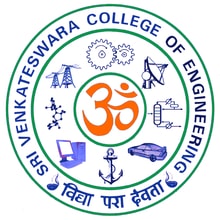Marine engineers onboard the ship monitor the performance of all the machinery and equipment and carry out maintenance as per plan. Normally a ship may have four to five engineers or sometimes more, and each of them has their work schedule and responsibility clearly split out. All the engineers are under the supervision of the Chief Engineer, who ensures the safe operation of the machinery, the safety of personnel under him, and environmental protection. Marine engineers also carry out periodic performance evaluation of ships’ machinery and gather information for maintenance or an upcoming retrofit.
Offshore jobs for Marine Engineers may include spending time on the oil rigs to supervise maintenance or repair efforts involving the rig’s mechanical systems.
Based on the performance specifications of the vessel, marine engineers plan and operate the propulsion system to deliver the power required at maximum efficiency. They also operate the steering system, heating, cooling, and ventilation systems and hydraulics for the ship. If the nature of the job calls for a modification of the existing arrangement, design, or retrofit, the marine engineer views and suggestions are well considered by the designers.
Once marine engineers know what equipment is to be installed and where each duct, machine, and power source is to be located, they prepare detailed plans. They create layouts and schematics, determine the work schedule, and prepare a cost estimate for approval by management.
As the work progresses, marine engineers may conduct periodic inspections or tests to catch any issues as soon as possible. They ensure that design specifications are being followed, monitor the project budget, and prepare status reports for clients or managers. They also have the additional responsibility to ensure that the systems and machinery confer to the marine standards and specifications, which are well defined and accepted by all maritime nations.
WHERE DO MARINE ENGINEERS WORK?
As seagoing vessels are used in various industries, a marine engineer can take his or her own pick about where they will work. Such as:-
- Navy vessels where you can combine your naval career with your technical qualifications.
- Manufacturers of shipping equipment.
- Oil industries.
While they can work on vessels, there are shore job opportunities as well, such as –
- Hotels that incorporate sea vessels in their services.
- Government organizations.
- Shipping companies.
- Maritime Training Institutes.
- Marine Engineering firms.
- Ship & Boat Building Industries.
MARINE ENGINEERING JOB PROFILES
According to reports, the employment of marine engineers and naval architects is expected to grow 12% from the year 2016 to 2026, faster than the average for all occupations. Marine engineers land jobs in Shipping firms, Indian Navy, Shipyards, Engine manufacturing companies, Shipbuilding firms, Ship design firms, Maritime universities, Research Institutions, etc.
CAREER ADVANCEMENT OPPORTUNITIES IN MARINE ENGINEERING
Marine engineers can advance into supervisory or management positions with experience. Typically, the USCG licenses can help marine engineers move up; as the level of license increases, responsibilities usually increase. Some marine engineers move into sales, using their technical knowledge to help clients plan and execute projects.
MARINE ENGINEERING ASSOCIATIONS
Compared to some other engineering fields, Marine Engineering is a small and highly focused profession. However, there are opportunities for robust professional development and camaraderie.
Probably the largest international group in this field is the Society of Naval Architects and Marine Engineers. With membership around 8500, this organization is focused on its stated mission “to advance the art, science, and practice of naval architecture, shipbuilding, and marine engineering. India has an organization called “The Institute of Marine Engineers (INDIA)“ which helps in promoting knowledge and building relationships.



